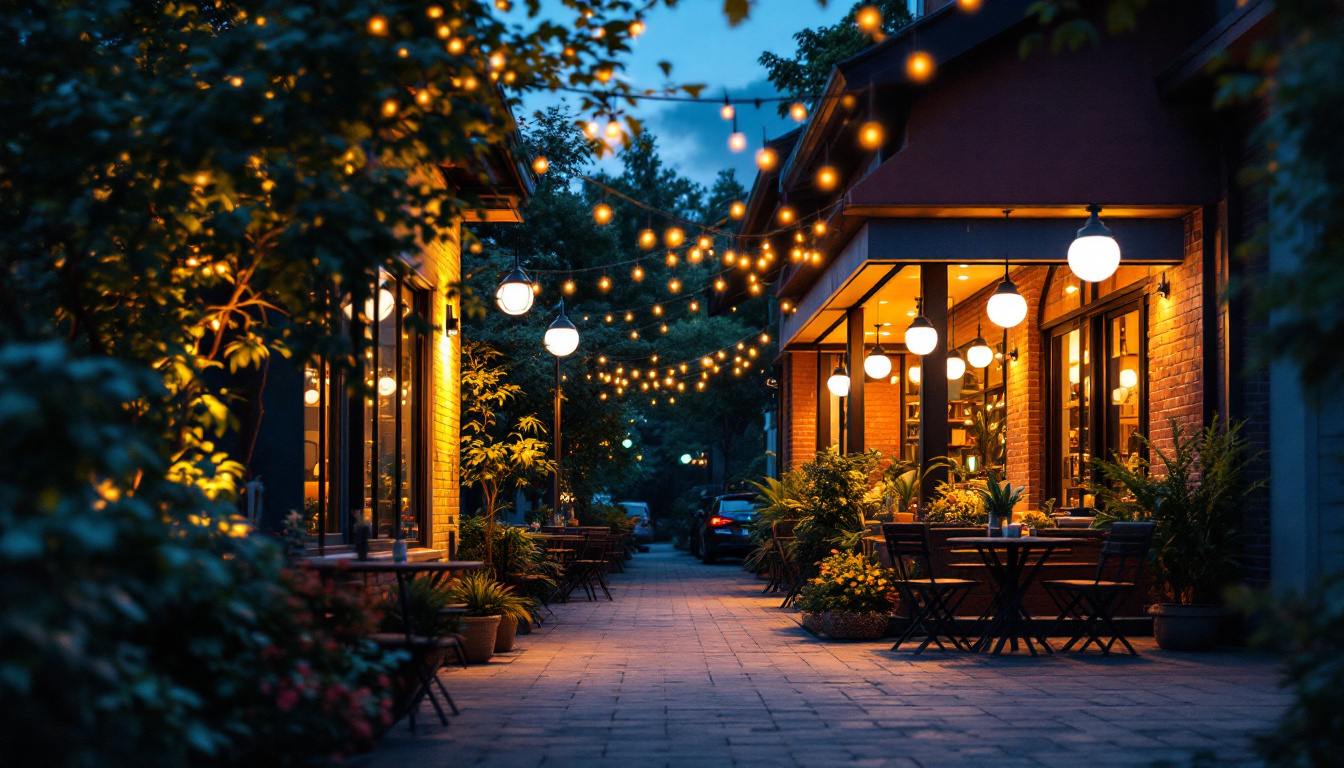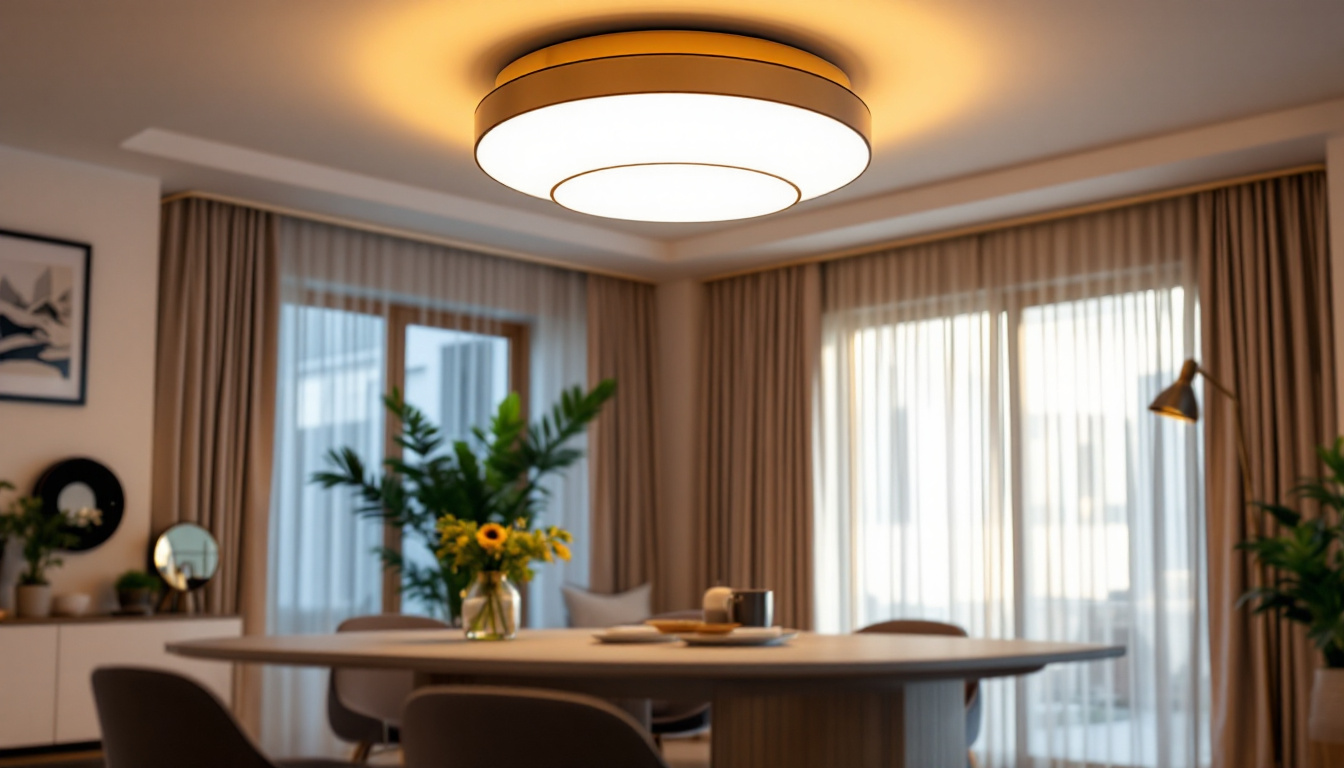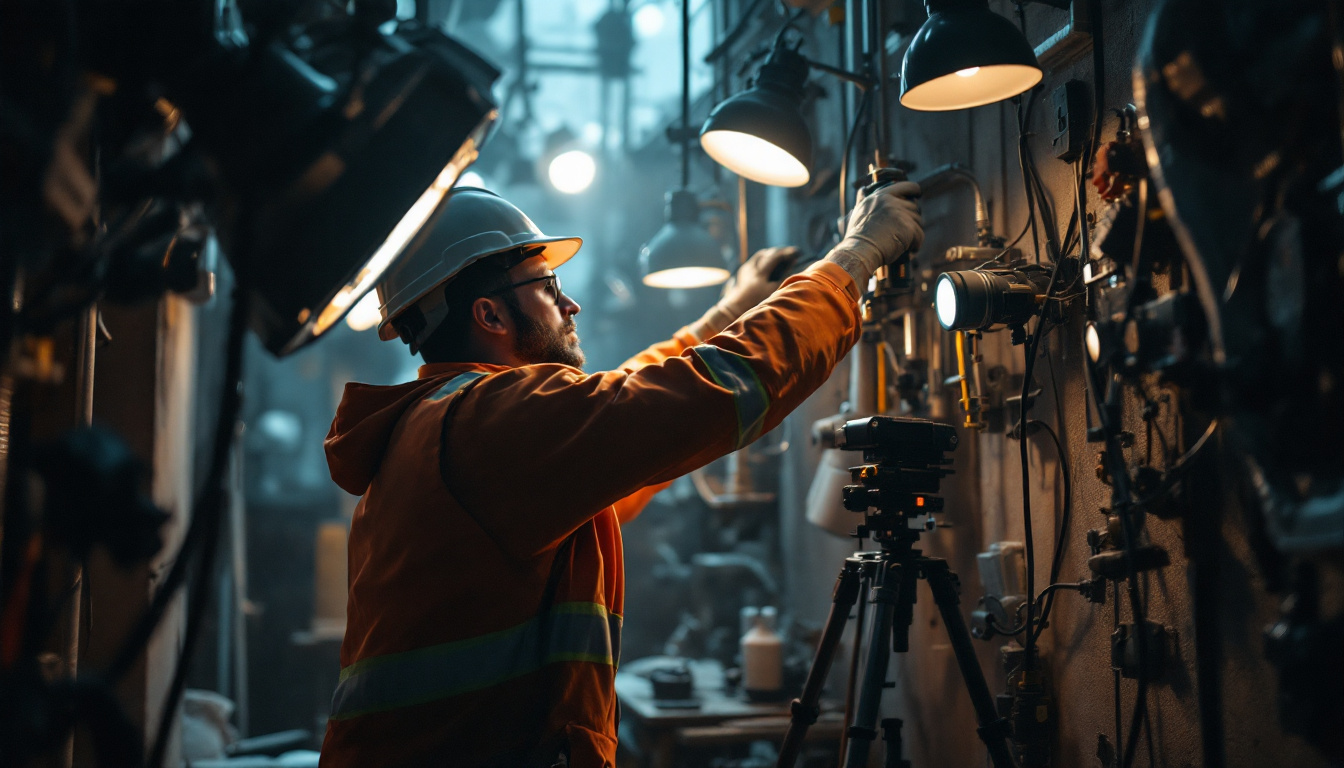

The world of lighting has evolved significantly, and with it, the choices available to lighting contractors have expanded. Among the many options, color temperature plays a crucial role in determining the effectiveness and ambiance of lighting solutions. Two popular color temperatures—5000K and 6000K—have become staples in the industry. Understanding the differences between these two can transform the way lighting contractors approach their projects, ensuring optimal results for their clients.
Color temperature is measured in Kelvin (K) and indicates the hue of a specific type of light source. It helps in determining how warm or cool the light appears to the human eye. Lower Kelvin values, like 2700K, produce a warm, yellowish light, while higher values, such as 6000K, yield a cooler, bluish light. The choice between 5000K and 6000K can significantly impact not only the aesthetics of a space but also its functionality.
5000K lighting is often referred to as “daylight” or “natural light.” It closely resembles the light emitted by the sun at midday, offering a balanced white light that enhances color accuracy. This makes it an excellent choice for environments where visual clarity is paramount, such as in design studios, art galleries, and retail spaces.
In addition to its aesthetic benefits, 5000K lighting is known for its ability to improve focus and productivity. Studies have shown that exposure to this type of light can enhance alertness and cognitive function, making it ideal for workspaces and educational facilities. Lighting contractors can leverage this knowledge to recommend 5000K solutions for projects that require heightened attention to detail. Furthermore, the use of 5000K lighting can create a more inviting atmosphere in homes, particularly in areas like kitchens and living rooms, where natural light is often desired to create a warm and welcoming environment.
On the other hand, 6000K lighting is often described as “cool white” or “bright white.” This color temperature leans more towards the blue spectrum, providing a crisp and vibrant light that can energize a space. It is particularly popular in commercial settings, such as offices, warehouses, and hospitals, where bright illumination is necessary for safety and efficiency.
While 6000K lighting can create a more sterile environment, it also has its advantages. For instance, it can help reduce eye strain in settings where tasks require prolonged focus. Additionally, the cooler tones can enhance the perception of cleanliness and modernity, making it a favored choice for contemporary designs. Beyond its practical applications, 6000K lighting is also increasingly being integrated into smart home systems, allowing users to adjust the color temperature based on the time of day or specific activities, further enhancing the versatility of spaces while promoting well-being and comfort.
Choosing between 5000K and 6000K lighting is not merely a matter of preference; it involves understanding the specific needs of each project. Different environments call for different lighting solutions, and the right choice can enhance both functionality and aesthetics.
5000K lighting is particularly beneficial in spaces where color accuracy is crucial. For example, in photography studios, this color temperature allows for true-to-life color representation, ensuring that images captured are as close to reality as possible. Similarly, in retail environments, accurate lighting can influence customer perceptions and purchasing decisions.
Moreover, 5000K lighting is excellent for residential applications, particularly in kitchens and bathrooms. The bright, natural light can make these spaces feel more inviting and spacious, enhancing the overall user experience. Lighting contractors can suggest 5000K options to homeowners looking to create a vibrant and welcoming atmosphere. In addition to these areas, 5000K lighting can also be advantageous in home offices, where clarity and focus are paramount. The bright illumination helps to reduce eye strain during long hours of work, promoting productivity and well-being. Furthermore, this color temperature can be employed in art studios, where artists benefit from the enhanced color rendering that allows them to see their work in the best light possible.
6000K lighting shines in environments where bright, clear illumination is essential. In industrial settings, such as factories and warehouses, this color temperature can improve visibility and safety, reducing the risk of accidents. The bright light helps workers see clearly, ensuring that tasks are completed efficiently and safely.
Additionally, 6000K lighting is often used in healthcare facilities. The bright, cool light can help medical professionals perform intricate procedures with precision. It also contributes to a sterile environment, which is crucial in hospitals and clinics. Lighting contractors working in these sectors can confidently recommend 6000K solutions to meet the specific needs of their clients. Beyond healthcare, 6000K lighting is also popular in educational institutions, where classrooms benefit from enhanced visibility that aids in concentration and learning. Bright lighting can help students stay alert and engaged, making it easier for educators to convey information effectively. Moreover, in outdoor applications such as street lighting and parking lots, 6000K fixtures provide excellent visibility at night, improving safety for pedestrians and drivers alike. This versatility makes 6000K lighting a valuable choice across various sectors, enhancing both functionality and security.
As the world becomes increasingly focused on sustainability, lighting contractors must consider the energy efficiency of their lighting solutions. Both 5000K and 6000K lights can be found in various energy-efficient options, including LED technology, which has transformed the industry.
5000K LED lights are highly efficient, consuming significantly less energy than traditional incandescent bulbs. This not only reduces electricity costs for clients but also contributes to a smaller carbon footprint. Many lighting contractors are now recommending LED solutions for their durability and longevity, making them a smart investment for both residential and commercial projects.
Furthermore, the natural daylight quality of 5000K lighting can reduce the need for additional lighting during the day, maximizing energy savings. Clients looking to enhance their sustainability efforts will appreciate the dual benefits of energy efficiency and improved lighting quality.
Similarly, 6000K LED options are also available, providing the same energy-saving benefits. The bright illumination of 6000K lights can often replace multiple lower-wattage bulbs, resulting in fewer fixtures needed overall. This can lead to significant cost savings in both installation and energy consumption.
In commercial settings, where lighting is often on for extended periods, the energy efficiency of 6000K lighting can translate into substantial savings over time. Lighting contractors can highlight these advantages to clients, promoting the long-term benefits of choosing energy-efficient solutions.
Understanding client preferences is crucial for lighting contractors. As trends in design and functionality evolve, so do the expectations of clients regarding lighting solutions. Both 5000K and 6000K lighting have their advocates, and being able to navigate these preferences can set a contractor apart.
With a growing emphasis on natural design elements, many clients are gravitating towards 5000K lighting for its ability to create a warm and inviting atmosphere. This trend is particularly evident in residential projects, where homeowners are seeking to replicate the feel of natural daylight indoors.
Additionally, as more people work from home, the demand for effective home office lighting has surged. Clients are looking for solutions that enhance productivity while maintaining a comfortable environment. The versatility of 5000K lighting makes it a popular choice in these scenarios.
Conversely, the modern office design trend often favors the crisp, clean look of 6000K lighting. As businesses strive to create dynamic and energetic workspaces, this color temperature aligns with the goal of fostering creativity and collaboration. Open office layouts, in particular, benefit from the bright illumination that 6000K lights provide.
Moreover, as health and wellness become focal points in workplace design, many companies are opting for lighting solutions that promote alertness and well-being. The invigorating nature of 6000K lighting can play a significant role in achieving these objectives, making it an attractive option for commercial clients.
For lighting contractors, the decision between 5000K and 6000K lighting should be based on the specific needs of each project. Factors such as the intended use of the space, client preferences, and energy efficiency considerations all play a role in determining the best solution.
Before making a recommendation, contractors should conduct a thorough assessment of the project requirements. Understanding the purpose of the space, the activities that will take place, and the desired ambiance can help in selecting the appropriate color temperature. Engaging in open discussions with clients can also provide valuable insights into their preferences and expectations.
Ultimately, the goal is to strike a balance between aesthetics and functionality. While 5000K lighting may enhance color accuracy and create a warm ambiance, 6000K lighting can provide the bright, energizing illumination needed for productivity. Contractors should consider how these elements interact to create a cohesive lighting design that meets the needs of their clients.
In a rapidly evolving lighting industry, understanding the differences between 5000K and 6000K lighting is essential for lighting contractors. Each color temperature offers unique benefits and applications, making them valuable tools in a contractor’s arsenal. By staying informed about the latest trends, energy efficiency options, and client preferences, lighting contractors can transform their approach to projects, ensuring optimal results for their clients.
As the demand for innovative and effective lighting solutions continues to grow, the ability to navigate the complexities of color temperature will set contractors apart in a competitive market. Whether opting for the natural warmth of 5000K or the invigorating brightness of 6000K, the right choice can elevate any project, enhancing both functionality and aesthetics.
Ready to bring the transformative power of 5000K and 6000K lighting to your projects? At LumenWholesale, we’re committed to equipping you with the highest quality, spec-grade lighting products at prices that make sense for your business. Say goodbye to local distributor markups and hello to a vast selection of reliable, high-performance lighting that meets the most rigorous industry standards. With free shipping on bulk orders, you can stock up on superior lighting solutions and enjoy the best value without any hidden fees. Elevate your lighting game and give your clients the exceptional results they deserve. Discover the ideal blend of quality, affordability, and convenience at LumenWholesale – Wholesale Lighting at the Best Value.

Discover how investing in large outdoor lights can illuminate new opportunities for your contracting business.

Discover how unique flush mount lighting is revolutionizing the lighting industry, offering contractors innovative solutions for modern design challenges.

Explore the key challenges faced by lighting contractors as Armacost delves into industry-specific hurdles.

Discover why purchasing vapor tight lighting in bulk from local distributors might not be the best choice.
Get notified when NEW deals are released.
Optimize your budget with wholesale discounts.
Only top-quality, specification-grade lighting products.
No additional costs at checkout - what you see is what you pay.
We understand the unique needs of contractors.